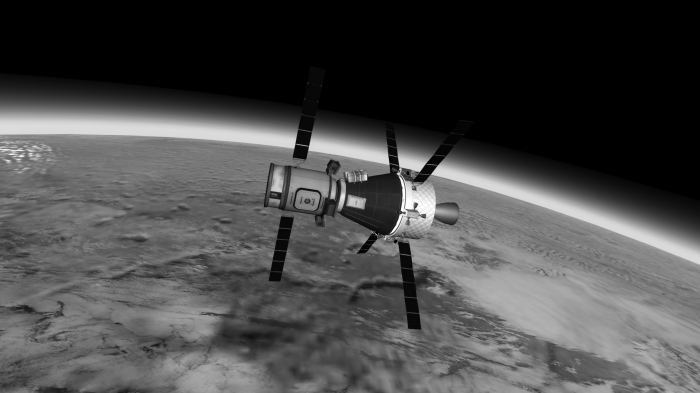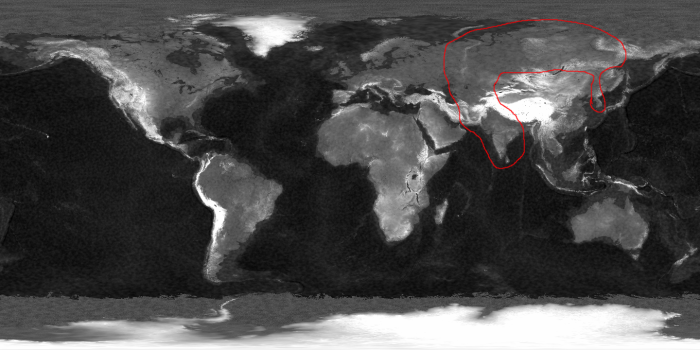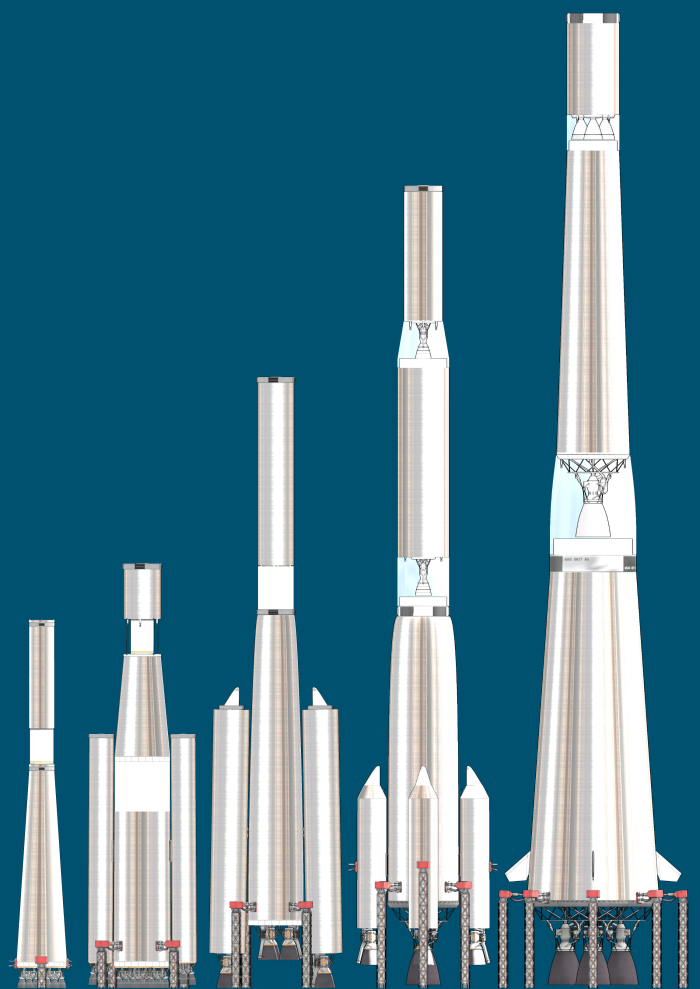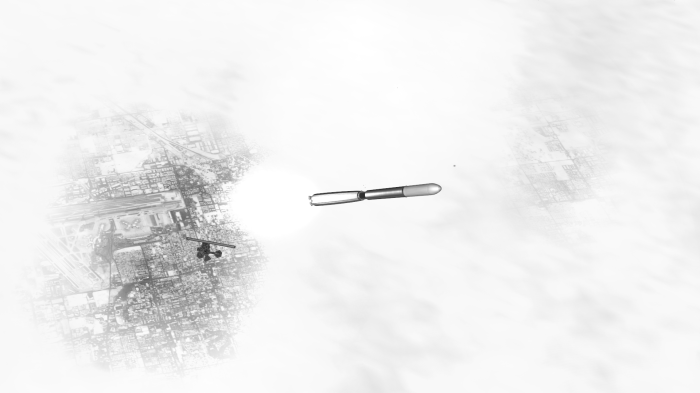December 21st, 1956; Satish Dwahan launch site.
“Welcome to the Satish Dwahan space centre everyone”, Gene told the assembled group of Kerbinian reporters standing behind the Vehicle Assembly Building. “I’m sorry for keeping you all in this area for several hours, not to mention all those rules when coming in – but it’s all to not spoil the big surprise”, Gene continued with the Ministry of IT bureaucrat next to him looking suitably uncomfortable at the whole concept of revealing stuff…
“We figured that this thing weren’t going to be possible to keep silent anyway due to the size, so we might as well reveal it right here and now to you guys, so if you’ll all follow me around the VAB it should have cleared the doors fully by now – and yes, you are allowed to take photos of it when you see it.”, Gene said, as he started off with the bureaucrat, leading the host of reporters around the VAB.
As the reporters cam around the building, none of them actually took any photos initially, the were too busy gawking with wide eyes at what was in front of them.

“Gentlemen, I give you the Bear-1 prototype – a one of a kind launcher, scheduled for launch in 25 days, when the roll-out is complete. Everything here is state of the art, even though the rocket in its entirety have been under construction here at the site for more than half a year – which is incidentally why you’ve almost exclusively seen launches from the Kosmodrone this year.”, Gene told the reporters.
“That thing is huge!”, one of the reporters suddenly blurted out, with an almost wild look in his eyes. Gene recognised him as one of the more enthusiastic reporters when it came to rockets going to space.
“Indeed it is”, Gene replied, “the biggest thing ever made here, it stands an impressive 97 meters tall, measuring 26 meters at the base and coming in at an impressive 5123 tonnes. It is in fact so large, that we need a full 8 of our brand new F-1 engines on its first stage, producing an impressive 54 MN of thrust.”
“The Illyriens might be proud of being able to make a rocket not even half the size of the fabled Saturn V, from the famous Kerbinian novel.”, Gene continued, “The Bear-1 though? It is four time as large as anything the Illyriens have conceived, dwarfing even the fabled Saturn V – and proving once again the superiority of Kerbinian engineering.”
“I hear Wernher is crossing his fingers that the launchpad survives the launch unscathed”, Gene joked before looking out at the assembled reporters for more questions, spotting one from the Kerbinia Financial.
“The cost of this thing must have been massive, can you divulge the price-tag?”, the reporter asked Gene.
“In part I can”, Gene started, “The actual rocket costs about 1/8th of a million – but that’s not counting R&D costs as well as the numerous of tests and simulation one have to do with a rocket this size”.
As no one seemed to actually want to ask about what the mission was, or how big the payload put into orbit would be, Gene decided to round up the Q&A session a bit early, “I’ll be over by the VAB with some of the engineers and scientists to answer technical questions about the rocket and its mission, while any policy or political comments can be had from the Ministry of IT representative standing next to me here”, Gene informed them, hoping secretly that they’d all just swarm the bureaucrat and leave him alone for a bit.






